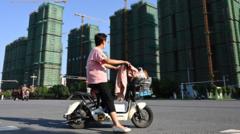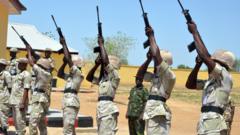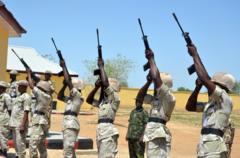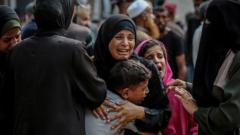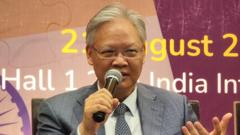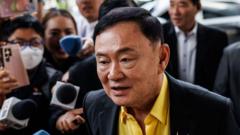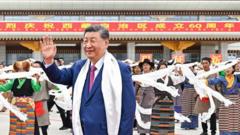The Kirti Monastery has long been a symbol of Tibetan resistance, but increasing surveillance and repression by the Chinese government pose significant challenges. As the Dalai Lama turns 90 and confirms his plans for succession, tensions mount regarding the future of Tibetan identity and religious freedom.
Tibetan Resistance Faces Challenges Amid Growing Tensions with China
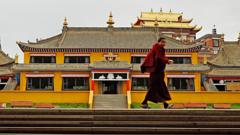
Tibetan Resistance Faces Challenges Amid Growing Tensions with China
A visit to the Kirti Monastery in Sichuan reveals the persistent struggle of Tibetans against Chinese rule as the Dalai Lama asserts his successor will be chosen posthumously.
Nestled in the heart of Sichuan Province, the Kirti Monastery has long symbolized Tibetan resilience amidst oppressive Chinese governance. On the eve of the Dalai Lama’s 90th birthday, a quiet monk approached our team, stating, "Things here are not good for us," a poignant reflection on the precarious state of religious freedom for Tibetans.
The monastery gained notoriety in the late 2000s as a site of self-immolation protests against Beijing's rule, with the scars of these acts still etched into the town’s narrative. Present-day Kirti is no less tense; surveillance cameras and police checkpoints manage the movements of locals and newcomers alike. A monk warned us, "Be careful, people are watching you," underscoring the peril of even brief public discussions regarding the Dalai Lama or Tibetan autonomy.
China's rule over Tibet, established in 1950, has evolved into a combination of cultural suppression and heavy investment aimed at economical assimilation. Though invoking images of development and tourist appeal, Tibetans argue that Chinese influence has led to escalating restrictions on their liberties, their language, and their right to practice Buddhism freely. In many Tibetan communities, any display of allegiance to the Dalai Lama—whom Beijing has labeled a separatist—can lead to detention.
Aba, or Ngaba as it is known in Tibetan, remains pivotal as a robust center for Tibetan culture, evident in local protests and riots raging in 2008 against government suppression. This town, outside the so-called Tibet Autonomous Region, houses a population of Tibetan exiles who claim a homogenous national identity, hoping to reclaim their heritage.
On the other hand, new regulations threaten Tibetan history by mandating that all students under 18 attend Chinese state-run programs devoid of Tibetan teachings until the age of 18—a radical shift that some monks likened to cultural extermination. In a stark contrast, the momentum of impending celebrations in Dharamshala, India for the Dalai Lama highlights a life committed to Tibetan traditions and non-violence.
As awareness spreads regarding the Dalai Lama's announced succession plan, Tibet's future hangs in the balance. Exiled Tibetans have expressed mixed emotions over this announcement, while attitudes within Tibet's borders remain cloaked in silence and surveillance. Beijing's assertive declarations that the next Dalai Lama will emerge from within its jurisdiction only amplify fears of cultural dilution.
The sculpted landscapes of the Tibetan plateau starkly illustrate two contrasting realities under China’s governance—a culture entrenched in faith and the iron grip of authoritarian rule. As the protective image of the Dalai Lama faces potential obscurity, Tibetans grapple with the very essence of their identity, reliant on faith to navigate a future marked by uncertainty and political challenging.

